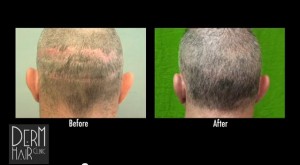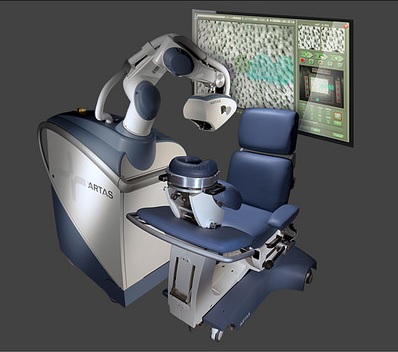Why Was Artas Developed For Hair Transplant Procedures?
It is estimated that there are about 35 million hair transplant candidates in the United States. And the demand for FUE hair transplant procedures has grown about 40% in the last year.
However the number of physicians who can successfully perform FUE hair transplant is not enough to meet these needs. FUE is time consuming and FUE surgeons easily become fatigued from the lengthy process, which can increase the risk of errors.
As an FUE technology system, Artas offers some new hope for helping more doctors meet the growing demand for hair restoration.
What Are the Pros and Cons of the Artas Robotic Hair Transplant System?
1) Artas uses algorithms to speed up the process of analyzing and identifying characteristics of hair grafts for selection such as:
- angle
- orientation
- direction
- density
- distribution
2) Using well defined algorithms to characterize hair follicle grafts enables a certain level of precision, efficiency and consistency in extracting each hair graft.
3) Artas offers some relief from the fatigue and tedium that is inherent with performing FUE hair transplant procedures. Surgeons may be less likely to commit errors and can concentrate on the artistry that is required in the second half of the procedure where the grafts are reinserted into the recipient area of the scalp.
What Are the Pros and Cons of the Artas Robotic Hair Transplant Surgery
1) Candidacy is restricted to straight haired patients with dark brown or black hair
2) Artas can only perform hair transplant extractions on the middle of the back and sides of the head. Many hair loss patients require finer caliber hair and/or an expanded donor supply. While this need can be met through nape, beard and body hair, Artas cannot be used to extract follicles in these regions.

3) Only a skilled doctor can determine additional characteristics for suitable hair grafts behind the basic quantifiable criteria. The doctor must have a vision of the final results to achieve for the patient. This is another element to be used in selecting the right hair grafts in order to create natural looking aesthetic outcomes.
4) The Artas hair transplant system uses larger diameter punches relative to most non robotic techniques. Attempts to use smaller punches would result in a higher transection rate. Risks associated with use of large punches include:
i. Larger punches entail larger wounds and scars. Healing complications may also occur.
ii. Larger punches can also damage adjacent follicles, creating a “moth eaten” appearance in the donor area.
5) The extraction phase of the Artas hair transplant technology uses a two needle system. The sharp inner needle extends to create the initial score. Then a round punch structure around the inner needle creates a circular deeper score. This 2 stage FUE technique has been known to bury grafts. Cysts can develop from this.
Although the Artas hair transplant technology has received FDA clearance and many experts believe in its potential to redefine hair restoration, it requires further refinements and would never replace the discernment of a skilled hair restoration surgeon. Hair transplant being part science and part art would always require the nuanced human touch for the kind of top notch results patients have come to expect in aesthetic surgeries.
Read about other FUE Hair Transplant tool systems

